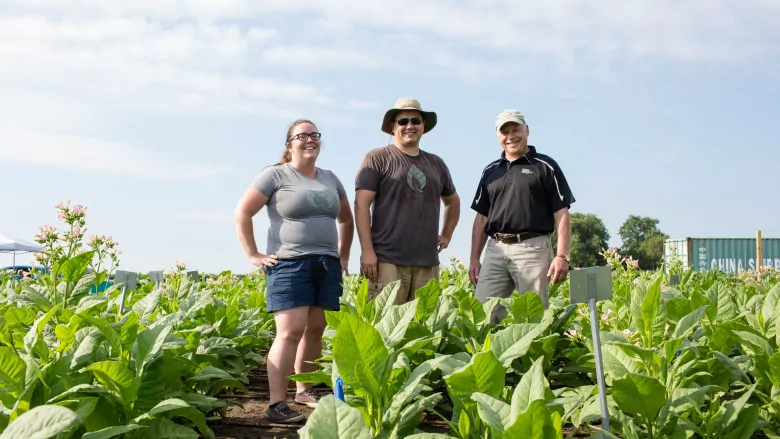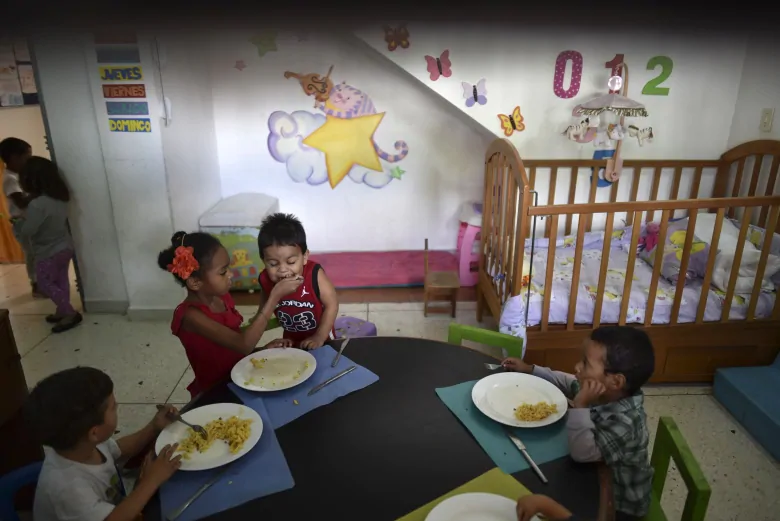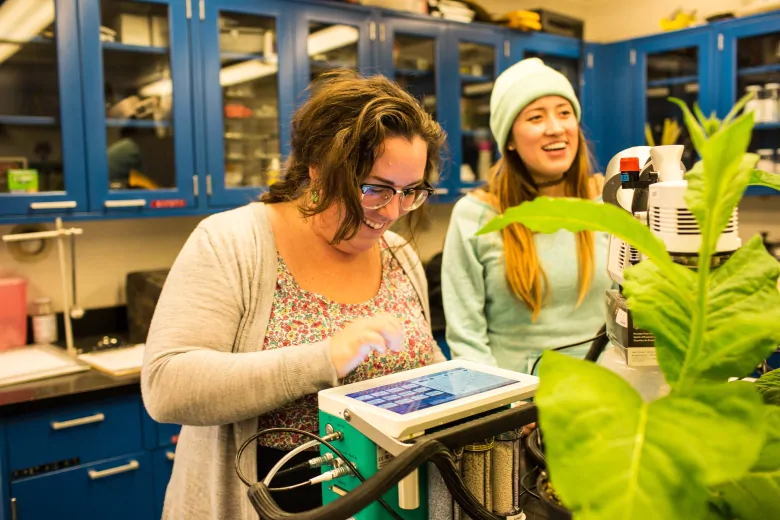Hacking photosynthesis to re-engineer crop plants and feed the world

We're approaching a very serious food crisis.
According to the UN, nearly a billion people are inadequately fed. By 2050, the global population is projected to increase from seven billion to 9.5 billion. That's an additional 2.5 billion mouths we need to feed.
"We're facing an agricultural challenge," said Donald Ort, the Robert Emerson professor of plant biology and crop sciences at the University of Illinois.
"The United Nations Food and Agricultural Organization estimates that by 2050/2060, in order to meet agricultural demand, we'll need to double production across the world."

Meeting that extra demand will not be easy. We've already optimized crop production with new, productive plant varieties and expanding the use of fertilizers and other nutrients during the Green Revolution, back in the 50's and 60's.
To increase yields again, we'd need a new revolution that will be more extreme — a complete redesign of how plants work.
Faster, taller and bigger
At The Ort Lab, researchers are working to boost crop yields by re-engineering photosynthesis, the most fundamental genetic function of plants.
They've targeted photosynthesis because in most plants it only operates at about 20 percent of its theoretical maximum efficiency.
If scientists could improve on this efficiency, crops could grow bigger, faster and feed more people.
At the Ort Lab, they're focussing on photorespiration, the cause of the inefficiency in photosynthesis.
Plants evolved to photosynthesize in an atmosphere completely different than the one we live in today — one that was rich in carbon dioxide. But the oxygen they produced, and that we rely on, later created problems. In a high-oxygen environment photorespiration essentially runs photosynthesis backwards for short spurts, costing the plant energy and resources.
To fix this "photosynthetic glitch" the team at the Ort Lab is working to make photorespiration happen faster by shortening the number of steps the process takes. That will cost the plant less energy, and allow it to get back to photosynthesizing and productive growth.
Amanda Cavanagh is a postdoctoral researcher at the University of Illinois, who's working in Donald Ort's lab on this project.
She and her colleagues transferred genes from pumpkin and a green algae called chlamydomonas that produces the enzymes needed to speed up photorespiration, to tobacco plants — a plant often used for crop experiments.
They then stress tested the plants under high oxygen conditions — exactly the situation where photorespiration energy losses are at their worst.
"Once we found the lines that did really well in that stress, we were able to grow them in the green house for multiple generations and then we put then in the fields mimicking real world conditions," said Cavanagh. "That's when we saw our best yields of almost up to a 40 percent."
The redesigned plants, when compared with the unmodified plants were much bigger, fuller and more robust.
The team is now working on replicating their engineering success in some of the world's most important crops such as wheat, potatoes and soybeans, to feed the world a little bit better.
Taking inspiration from nature
At the University of Toronto, another team of researchers is working on a different way to "tune up" photosynthesis in one of the world's most important crops: rice.
Tammy Sage, an associate professor in the department of ecology and evolutionary biology at the University of Toronto heads that research. She's been working with a large group called the International C4 Rice Consortium.
Their strategy borrows design from nature, and involves replicating a more efficient way to photosynthesize called C4 photosynthesis.
C4 photosynthesis evolved in a small group of plants about 30 to 35 million years ago as nature's solution to avoid photorespiration.
A big part of what the C4 process does is concentrate carbon dioxide in parts of the plant where the photosynthesis happens.This prevents them from gaining access to oxygen, which triggers photorespiration.
"Photorespiration has actually been eliminated in C4 plants," said Sage. Duplicating C4 photosynthesis t in plants that haven't evolved for it is a difficult task. "There's a lot of changes that need to happen with respect to the plant's anatomy and physiology."
So far, she and her group have been able to replicate at least the first steps in the evolutionary path they're trying to follow to engineer C4 rice.
Using genes from maize, they've engineered plant cell lines in which they've been able to increase the volume of chloroplasts, the organelles in which photosynthesis happens. It's the first big step of many, but the payoff could be huge.
Regulatory concerns
Public discomfort with genetic modification has been high, despite the assurances of scientists, even when the modifications have been small — modifying perhaps a single gene for pesticide resistance, for example.
So when it comes to the vastly more ambitious redesigns of fundamental aspects of the plants we depend on, it may be a whole different ball game.
"What I would say is that we now have an ability to modify plants and animals in ways that we never could have imagined before," said Rene Van Acker, the dean of the Ontario Agricultural College at the University of Guelph, where he conducts research on biosafety.
"What that means is that we have a new age of considerations in terms of risks and safety."
The new possibilities Van Acker talks about bring both risks and rewards. He, for one, thinks we've got a handle on those risks. And the rewards could be measured in all those billions of mouths we need to feed.

RELATED RIPE OBJECTIVES
Photorespiratory Bypass